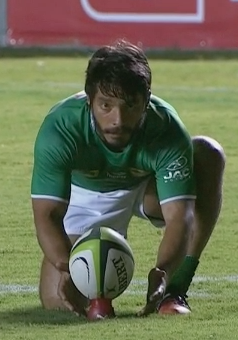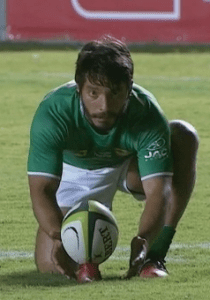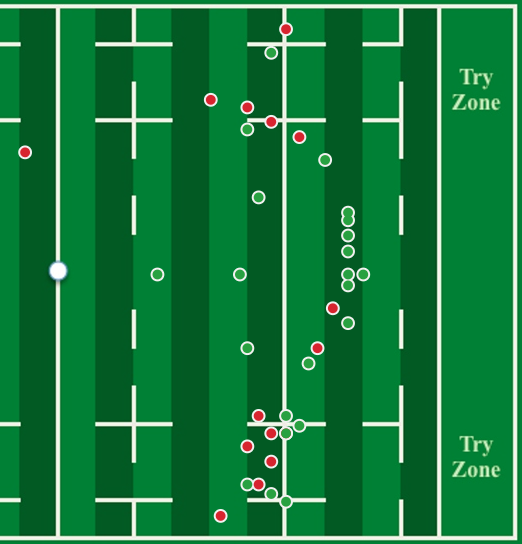

PHILADELPHIA, PA – Even though there were some really entertaining moments, we know that the Americas Rugby Championship in its first year did not see the same standard of rugby as, say, the 6 Nations, which was competed at the same time. Here is one final look back at the 2016 ARC and some numbers that give a small, but focused, sense of the level of skill displayed during the tournament. Kicks at goal and kicks to touch following penalties are two acts which are independent of teammates or opposition. They are isolated events whose success or failure is dependent on a single player acting alone.
One might also say that lineout throws, whether they are straight or not, is a basic – super-duper-basic – way to compare hookers. However, the referees in the ARC seemed not to care about straight throws for most of the tournament, so we can’t do that.
In an earlier post, I noted that the goal kicking percentage for the ARC was lower than one would expect, but I didn’t have the information to compare the difficulty of the kicks. Now, thanks to Jurie Nel at Goalkickers, we have that comparison. And it isn’t flattering to most of the kickers in the ARC.
From Goalkickers: “Value Added indicates the value added on the scoreboard by the goal kicker relative to other professional goal kickers. It is the number of points the kicker scored more than expected given the difficulty of his kicks. The higher the kicker’s Value Added the better the performance. A kicker with a negative Value Added actually lost his team points due to poor kicking relative to other professional goal kickers and given the difficulty of his kicks.”
Moises Duque had the best goal kicking performance in the tournament. James Bird had the worst. Only 3 kickers from the ARC added value; 13 performed worse than average. The kickers cost their sides 33.5 points, in total.
To see a map with every kick, sortable as well, click here.
As a USA fan, knowing that they lost to Brazil on a last-minute penalty goal and that they played Argentina to a draw makes looking at this table a painful experience. The USA kickers lost their side 19.8 points. Over the course of 5 matches. That is terrible.
[supsystic-tables id=’49’]
Here is a map of all of the USA goal kicks. Looking at the red dots, it is pretty easy to see the kicks that push them firmly to “below average.”

Territory Gained Average
During the World Cup, I tracked how much territory was gained from kicks to touch (KTT) following penalties. The stat is TGA (Territory Gained Average). The TGA includes all kicks to touch from penalties, regardless of location. ATGA (Adjusted Territory Gained Average) only considers kicks taken from further than 30 meters. As I was tracking these kicks, it occurred to me that there is particular value in kicks that gain a lot of territory that are taken from deep within a team’s defensive half. For that, there is Exit TGA which only considers kicks taken 75 meters or more from a team’s attacking try line.
This stat matters if one assumes that territory is valuable. That seems a pretty solid assumption, and all the information I’ve collected suggests it is true. Kicks to touch are not formalities; the territory won by those kicks matters.
According to ATGA and Exit TGA, the ARC players performed below the RWC standard; however, the gap is quite small for Exit TGA and only 2.8 meters for ATGA. The table below has the individual numbers from the ARC as well as totals for the ARC as a tournament and the totals from the 2015 World Cup.
[supsystic-tables id=’50’]
Niku Kruger is not in the table but had one kick to touch from 5 meters out.
Goal kicking and kicking for touch are 2 skills that don’t require years of high-level competition to improve. There seems no reason that the standard of kicking, of all kinds, in the ARC should be lower than Tier 1 competitions. Maybe there is something about kickers being introduced to the international stage and the pressure that comes with it. Maybe there is something about coaching. My experiences in America suggest that lots of teams don’t emphasize the value of kicking; with many players with little experience and low skill levels, kicking is seen as an “extra” and something that doesn’t fit in to most training sessions.
Here is hoping that if we continue to look closely at the value of kicking, through things like these stats, the task of developing skilled kickers within Tier 2 nations will become a valued thing itself.
Please feel free to comment below, look for and “Like” our Facebook Rugby Wrap Up Page and follow us on Twitter@: RugbyWrapUp, Jake Frechette, Junoir Blaber, Ronan Nelson, Jamie Wall, James Harrington, DJ Eberle, Cody Kuxmann, Nick Hall, and Declan Yeats, respectively.

